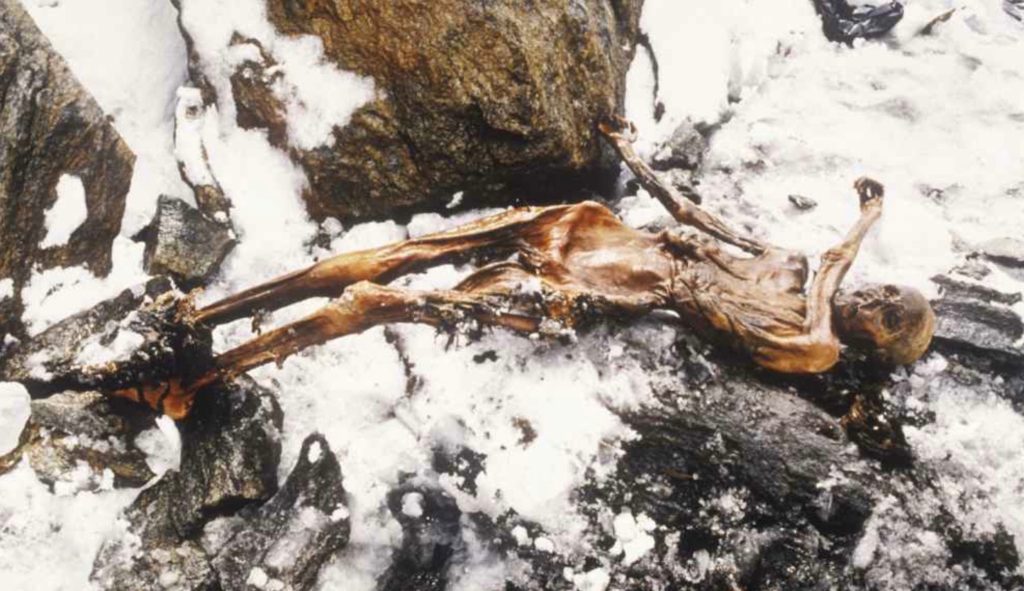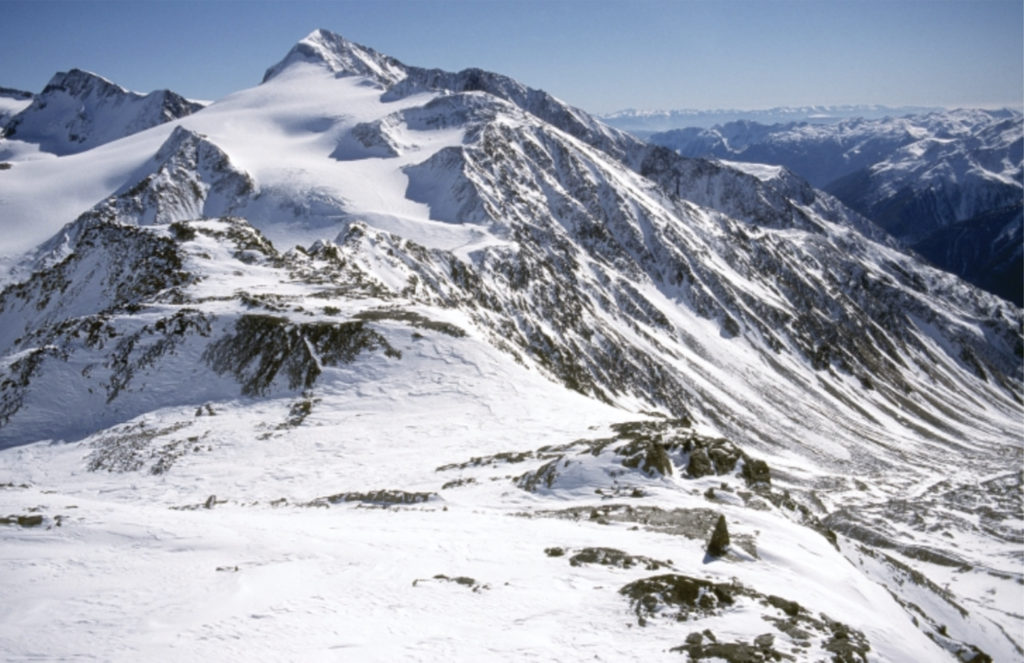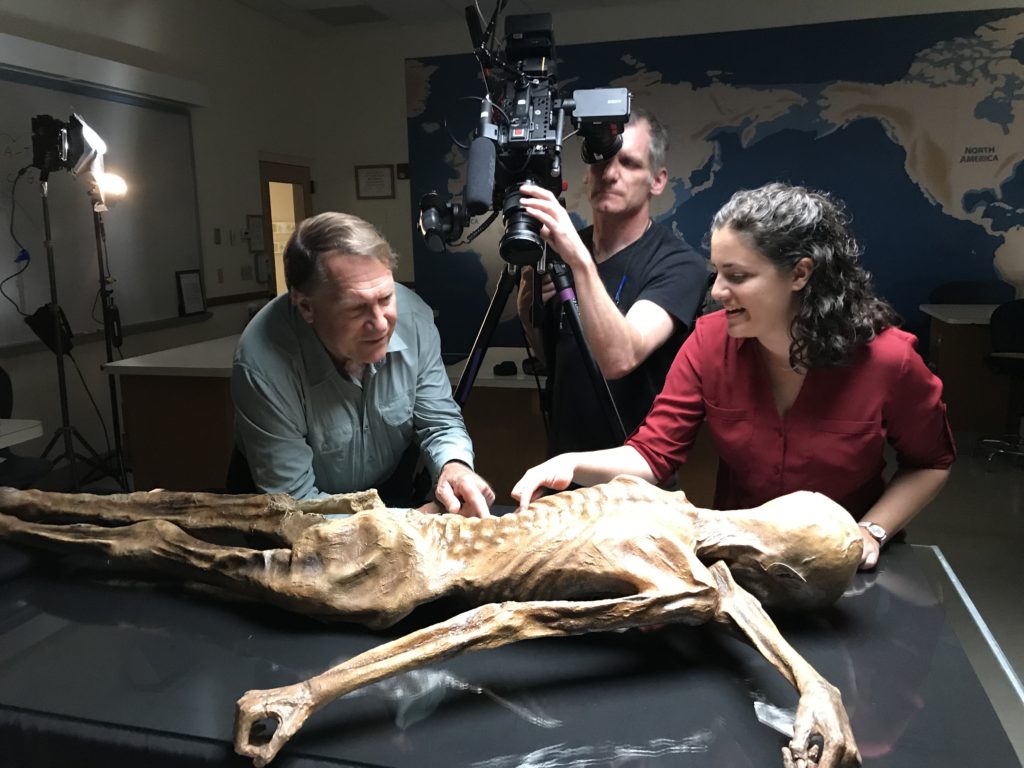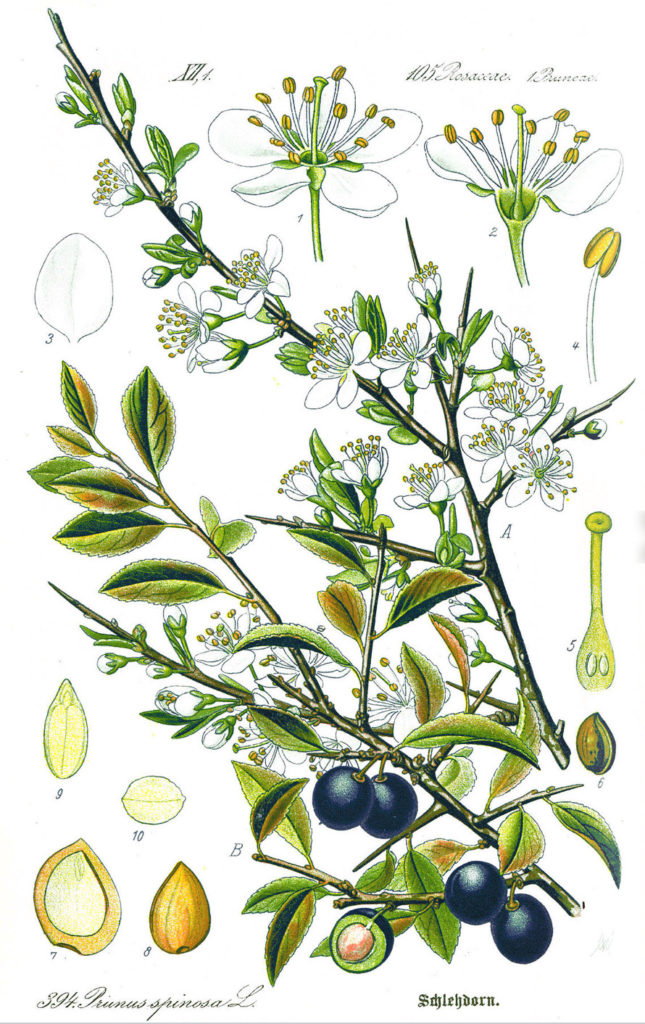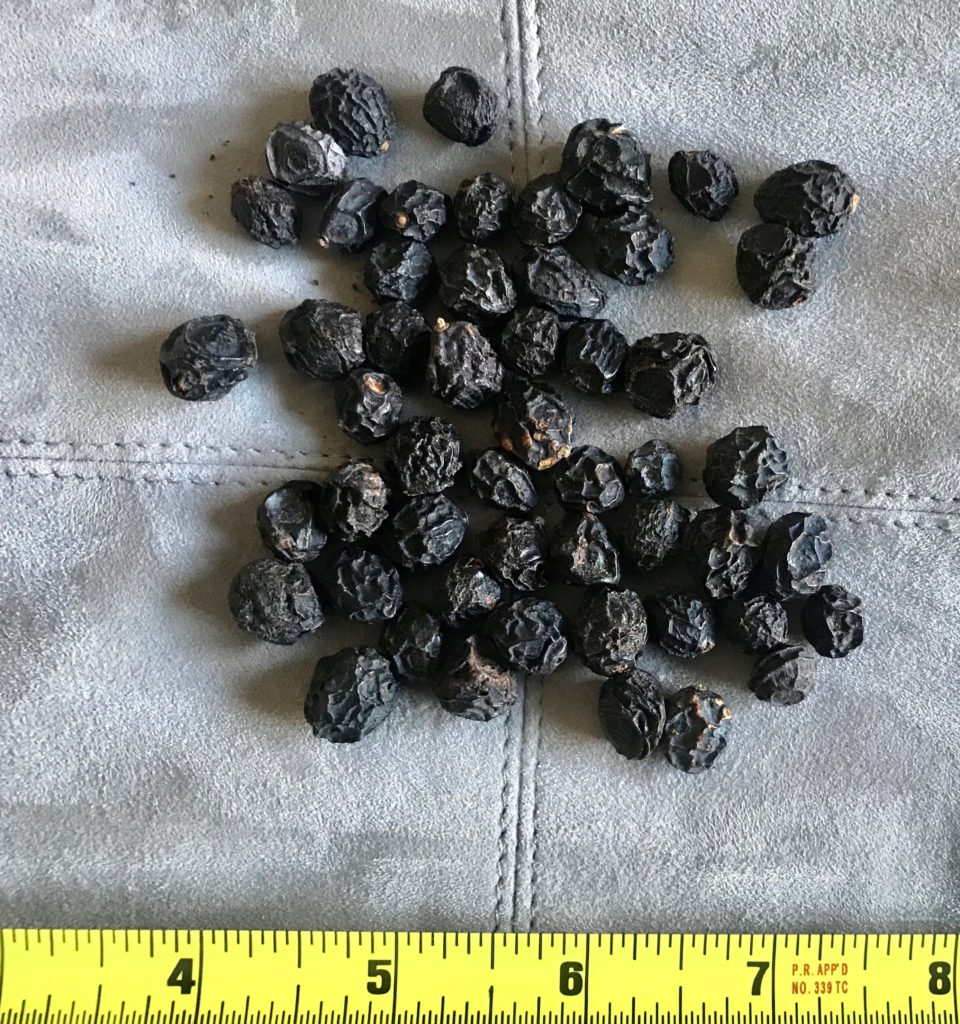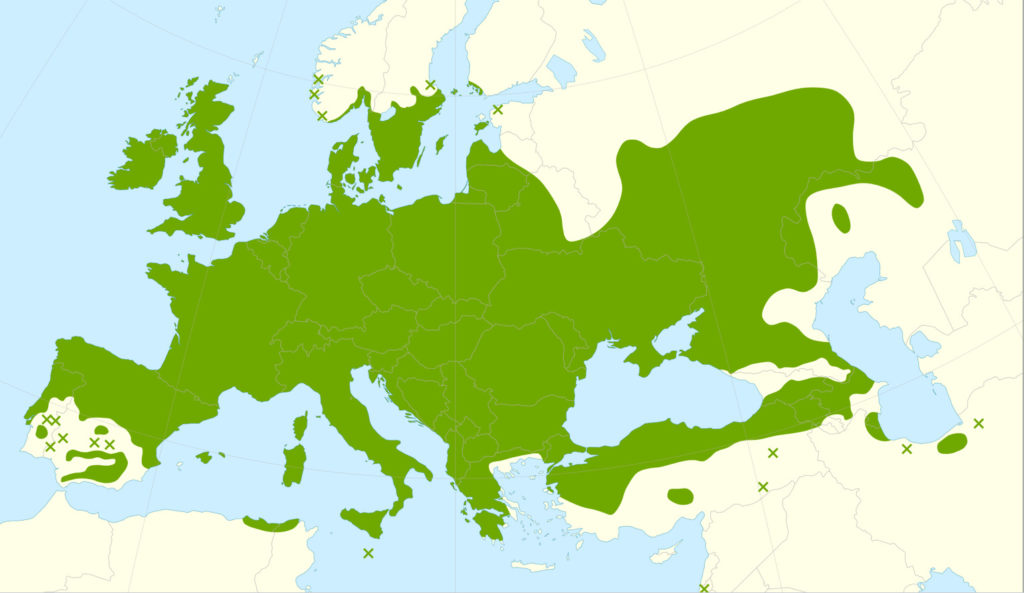
By Patrick Hunt –
Ötzi is now the most famous mummy of all time, eclipsing Ramses II and Tut from New Kingdom Egypt (ca. 1375-1300 BCE) in his preserved state as well as in his much older chronology. So it is a given that Ötzi research is instrumental to both archaeology and prehistory in what science can reveal from examining his preserved remains. The mummy of Ramses II, like most Egyptian mummies, was chemically altered by the embalming process, whereas Ötzi was not unnaturally and chemically altered but only in a deep freeze for thousands of years and virtually intact, with preserved organs, the majority of his tissue as well as fingernails, hair and even the contents of his stomach. Even some of his red blood cells are preserved and his genome has been mapped. Thus, Ötzi is the intense object of considerable scientific research for the past 30 plus years, especially for the equipment he carried and the clothing he wore as well as what he ate for the prior 36 hours or so, mostly well-preserved.
Due to the long-term cold temperature preservation, we also know much about what Ötzi carried with him on his fateful last journey over the Ötztal Alps and the Tisenjoch Pass at 10,500 ft. elevation. [1] This preservation includes diverse wood and plant materials, some of which remains were found in practical tools and weapons, also some of which remains were for food and medicine. Ice and snow are almost as good and possibly even better than deserts for organic preservation – why we have refrigerators and freezers to preserve our food – and the “enemies” (hydrolysis, thermolysis, photolysis) of organic material are somewhat stymied in cold glacial conditions in what we can term a refrigerated state. While not under cryogenic conditions – at a temperature of around -150 ° C or -240 ° F – the five thousand years of mostly glacial cold and the current museum environment have given us more quality information than any other organic archaeological artifact of similar vintage.
Equally, Ötzi’s preserved organic putative “medical kit” reveals astonishing things about his apparent knowledge of which specific remedies to apply to his many ailments. The growing knowledge of Ötzi’s medical applications has considerably pushed back the frontier of history of medicine to the Late Neolithic, a time when no writing has documented such practices, since writing only appears to begin about the same period in Mesopotamia and Egypt but without any such specificity since the earliest known writing systems only address accounting inventories of early domestication of plants and animals and incipient farming and herding.
Whether or not Ötzi was seriously infected with Lyme Disease – since there is strongly divided opinion about this although Borrelia species bacteria were found inside him [2] – nonetheless the amino acid piptamine from the birch polypore bracket fungus (Formitopsis betulina) appears to inhibit Lyme Disease (Borreliosis) along with both viral and bacterial inhibition as an antibiotic as well as antihelminthic against parasites like whipworm. [3] There is definitely a Lyme arthritis from Borreliosis diseases but it is yet unknown if he had this specific arthritis since the single sample was taken from his left hip bone rather than repeated in many other parts of his body. Although debated, [4] perhaps his Borrelia infection was worse than we know from only this single small bone sample.
Also still debated in terms of deliberate use, the dried sloe berry found in Ötzi’s context (still arguable if there was another sloe berry) that he seems to have carried at least a season after harvesting – which demonstrates deliberation rather than accidental foraging – was also a known medical remedy against several of his potentially debilitating problems. [5]
But the scientific community is not unanimous in considering these plant artifacts of Ötzi a deliberate “medical kit”, although many specialists lean in that direction. Part of the problem lies in Ötzi being an apparent singularity – no known comparanda of other contemporaries – and the debate is compounded by a dearth of any contemporary literature since we have no writing documented from 5000 years ago in this region of Northern Italy and are unlikely to find any textual literacy that early there whatsoever.
Sloe berries from the European blackthorn (Prunus spinosa) also found in Eurasia and elsewhere have been consumed since the early Neolithic, including at least 19 remains in Swiss Lake villages and also at Lake Constance at Arbon Bleiche 3 village. [6] Much later, a trough with 400 sloe pits was found at an Iron Age lake village near Glastonbury. [7] Other sloe berry finds from archaeological sites throughout the historic record suggest this plant has a long history indeed, although it is not yet known how many or for how long such blackthorn properties were then understood. What is often considered as homeopathic medicine is not always duly documented even at present, but blackthorn or sloe berries continue to be studied and have appeared as objects of interest in medical or herbal literature for hundreds of years in Europe. Sloe berries might even be considered a superfood, since so many potential medical benefits can be ascertained, many of which Ötzi may have known from direct experience given his specific medical needs. The fact that so many detailed health needs Ötzi had are so directly addressed by sloe berries appears more and more important as blackthorn pharmacology research continues before and since Ötzi’s discovery in 1991.
Blackthorn or sloe berry is primarily found in Europe’s and Western Asia’s mid-continental latitudes (see map in images below) as their preferred habitats are between 35 ° to 55 ° Latitude north. So blackthorn habitat would also be found around the Mediterranean including Sicily and Greece; south of which it would be too arid and hot, and also with northern limits with long cold winters along the Baltic Scandinavian climates except along coasts. Thus, Blackthorn habitats are not found in high Alpine altitudes above 1700 meters (~5000 ft.) but obviously were found 5,000 years ago and still easily grow in deciduous zones in low Alpine valleys as in the Adige River watershed or the lower Val Senales (Schnals) or Val Venosta (Vinschgau) near Ötzi’s apparent wide distance roaming zone of at least 30-50 square miles.
As mentioned, Ötzi seems to have carried in his traveling kit and personal belongings at least one dried sloe berry – possibly more of up to at least a handful although only one remained – picked from lower elevations, which means they had been harvested in the previous fall and stored in the interim, since he died in late spring to early summer. The one known sloe berry (in several pieces) was found next to or near Ötzi’s body in the ice and snow from the 1992 excavations of the gully find spot. [8]
Modern medical and pharmacological studies on sloe berries and their benefits are numerous, with scientific citations numbering in dozens (see below). Ethnopharmacology has not always been a high priority in the US as in Britain and Europe, particularly Switzerland, but is a rapidly growing discipline along with ethnobotany. Archaeoethnobotany has also emerged with examinations of the material record through archaeology and phytohistory to complement ancient Classical sources such Theophrastus’ De Planetarium and Dioscorides’ De Materia Medica.
Some of the apparently known, and experimentally-tested benefits of sloe berry are metabolic stimulant, high Vitamin C, herpes, treatment for soothing diarrhea, eczema, diuretic, allergies, anti-inflammatory, anti-carcinogen, improved vision, colds, catarrh, indigestion, kidney stones, skin and bladder disorders, heart medicine to reduce atherosclerosis and improve blood pressure, improved wound and injury healing, reducing cholesterol, and immune system boost. While the sum of these benefits may seem hyperbolic, suggesting sloe berry is a candidate for a plant panacea, nonetheless many medical studies reported in journal articles substantiate these claimed properties. For some of the above recorded uses note these peer-reviewed studies. [9] [10] [11] [12] [13] [14]
While the final medical determinations on Lyme disease are inconclusive for Ötzi as stated above, he may have suffered from some debilitating effects of Lyme Disease. [15] These medical issues could likely include Lyme arthritis, encephalitis, eczema, vertigo and dizziness and vision problems as well as diarrhea from his whipworm (from Trichuris trichuria) and heart problems including hardened arteries. [16] Sloe berries aid in alleviating many of these medical issues as well as increasing visual acuity with carotenoids and offering high vitamin C for various proactive reasons, along with well-known anti-inflammatory and other uses. If Ötzi deliberately carried sloe berries in dry form [17] – since they were not in season at Ötzi’s time of death but harvested the previous autumn – it greatly increases the probabilities of deliberation and purposeful use, compounding the likelihood of Ötzi’s knowing empirically some of the medical benefits of sloe berries. In conclusion, it is no surprise regarding Ötzi’s importance to archaeoethnobotany: “…The Iceman site has up to now yielded the highest plant diversity ever found from a Late Neolithic – Copper Age archaeological site.” [18]
Notes:
[1] Klaus Oeggl. “The Diet of the Iceman” in S. Bortenschlager and K. Oeggl, eds. The Iceman in His Natural Environment. The Man in the Ice vol. 4 (Springer Verlag). Wien, 2000, 89-115; Klaus Oeggl. (2001) “Pollen analyses of the Iceman’s colon content” in D. K. Goodman and R. T. Clarke, eds. Proceedings of the IX International Palynological Congress 1996. American Association of Stratigraphic Palynologists Foundation, Houston, 511–516.
[2] W. F. Kean, Shannon Tocchio, Mary Kean and K. D. Rainsford. “The musculoskeletal abnormalities of the Similaun Iceman (“ÖTZI”): clues to chronic pain and possible treatments.”Inflammopharmacology 21.1 (2012) 11-20, esp. 18-19.
[3] B. Schlegel, U. Luhmann, A. Härtl, U. Gräfe. “Piptamine, a new antibiotic produced by Piptoporus betulinus Lu 9-1” Journal of Antibiotics (Tokyo) 53.9 (2000) 973-4.
[4] Andreas Nerlich, Eduard Egarter Vigl, Angelika Flecking, Martina Tauber, Oliver Peschel. “The Iceman: Life scenarios and pathological findings form 30 years of research on the glacier mummy ‘Ötzi’.” Pathologe 42.5 (2021) 530-39.
[5] Brenda Fowler. Iceman: Uncovering the Life and Times of a Prehistoric Man Found in an Alpine Glacier. Chicago: University of Chicago, 2000, 193; Angelika Flecking. Ötzi, the Iceman: The Full facts at a Glance. Vienna / Bolzano: Verlag Folio / South Tyrol Museum of Archaeology, 2011, 3rd ed., 98.
[6] Stephanie Jacomet. “Plant economy and village life in Neolithic lake dwellings at the time of the Alpine Iceman.” Vegetation History and Archaeobotany 18.1 (2009) 47-59, esp. at the Arbon Bleiche 3 Village on Lake Constance; Sue Colledge, James Connoly. “Wild plant use in European Neolithic subsistence economies: a formal assessment of preservation bias in archaeobotanical assemblages and the implications for understanding changes in plant diet breadth”. Quaternary Science Reviews 101 (2014) 193-206, esp. Table 4, 201; at Arbon Bleiche 3 Village, 202-3.
[7] S. Lyons. “Food, plants and foreign foodstuff: the archaeological evidence from urban medieval Ireland.” Proceedings of the Royal Irish Academy: Archaeology, Culture, History, Literature, vol. 115c. (2015) 111-66. For the trough of sloe pits found at a Iron Age lake village near Glastonbury, see Woodland Trust, UK, and The Scottish Farmer, Sept. 27, 2016 (https://www.woodlandtrust.org.uk/mediafile/100816341/blackthon-autumn-watch.pdf) (https://www.thescottishfarmer.co.uk/lifestyle/14767361.sloe-harvest-disrupts-gin-lovers-favourite-tipple/) as well as Terry Breverton, Breverton’s Complete Herbal, Quercus / Hachette, 2011.
[8] Iceman Database: South Tyrol Museum of Archaeology. “Blackthorn / Sloe (Prunus spinosa”) https://www.iceman.it/en/oetzi/database.
[9] “Medicinal Properties of Blackthorn.” Editors, The Pharmaceutical Journal. The Royal Pharmaceutical Society Publication, Sept. 2011. These include reducing edema, diuretic and anti-inflammatory, anti-carcinogenic, cardiovascular disease, astringent, among others.
[10] A. Marchelak, A. Pawlak, J. Kolodziejczyk-Czepas, P. Nowak, M. A. Olszewska. “Bioactivity Potential of Prunus spinosa L.” Frontiers in Pharmacology (EthnoPharmacology) October 2017. These include: antioxidant activity, anti-inflammatory effects, cardiovascular protection, myocarditis, anti-hypertension, among others.
[11] H. Kolodziej, M. K. Sakar, J. F. W. Burger, R. Engelshowe and D. Ferreira. “A-type proanthocyanidins from Prunus spinosa.” Phytochemistry 30 (1991) 2041-7.
[12] V. A. Makarov and I. A. Khadzhac. “Anti-inflammatory and P-vitamin activity of blackthorn flavonols.” Farmakol. Toksikol. 39 (1969) 438–441.
[13] E. Middleton, C. Kandaswami, and T. C. Theoharides. “The effects of plant flavonoids on mammalian cells: implications for inflammation, heart disease, and cancer.” Pharmacology Review 52 (2000) 673–751.
[14] V. Poonam, G. Raunak Kumar, L. C. S. Reddy, R. Jain, S. K. Sharma, and V. S. Parmar. “Chemical constituents of the genus Prunus and their medicinal properties.” Current Medical Chemistry 18 (2011), 3758–3824.
[15] Kean et al., op. cit. 2
[16] J. H. Dickson, Klaus Oeggl, Linda Handley. “The Iceman Reconsidered”. Scientific American (Spec. Ed. 15) Jan., 2005, 4-10.
[17] Andreas G. Heiss and Klaus Oeggl. “The plant macro-remains from the Iceman site (Tisenjoch, Italian-Austrian border, eastern Alps): new results on the glacier mummy’s environment.” Vegetation History and Archaeobotany 18 (2009) 23-35.
[18] op. cit. Heiss and Oeggl, 2009, 27
****************
Note latest Otzi NatGeo documentary (filmed in May, 2019) released in July, 2019, produced by Erin Alconcel and assisted by Danielle Skipper.
Also note: the author has studied “Ötzi the Iceman” – not his real name, unknown since his era was preliterate – for nearly three decades through the duration of the Stanford Alpine Archaeology Project, which he directed 1994-2012, and beyond to the present, partly for National Geographic which funded his Alpine research 2007-08 and beyond. The author is also a National Lecturer for the Archaeological Institute of America on Its (including as a national Norton Lecturer) and frequently speaks on Iceman research across the US for National Geographic Learning as well as a National Geographic Explorer since 2007. One of the author’s areas of focus is the high level of preservation of organic material in Alpine climates. The author is also a Research Associate in Archeoethnobotany at the Institute for EthnoMedicine.
